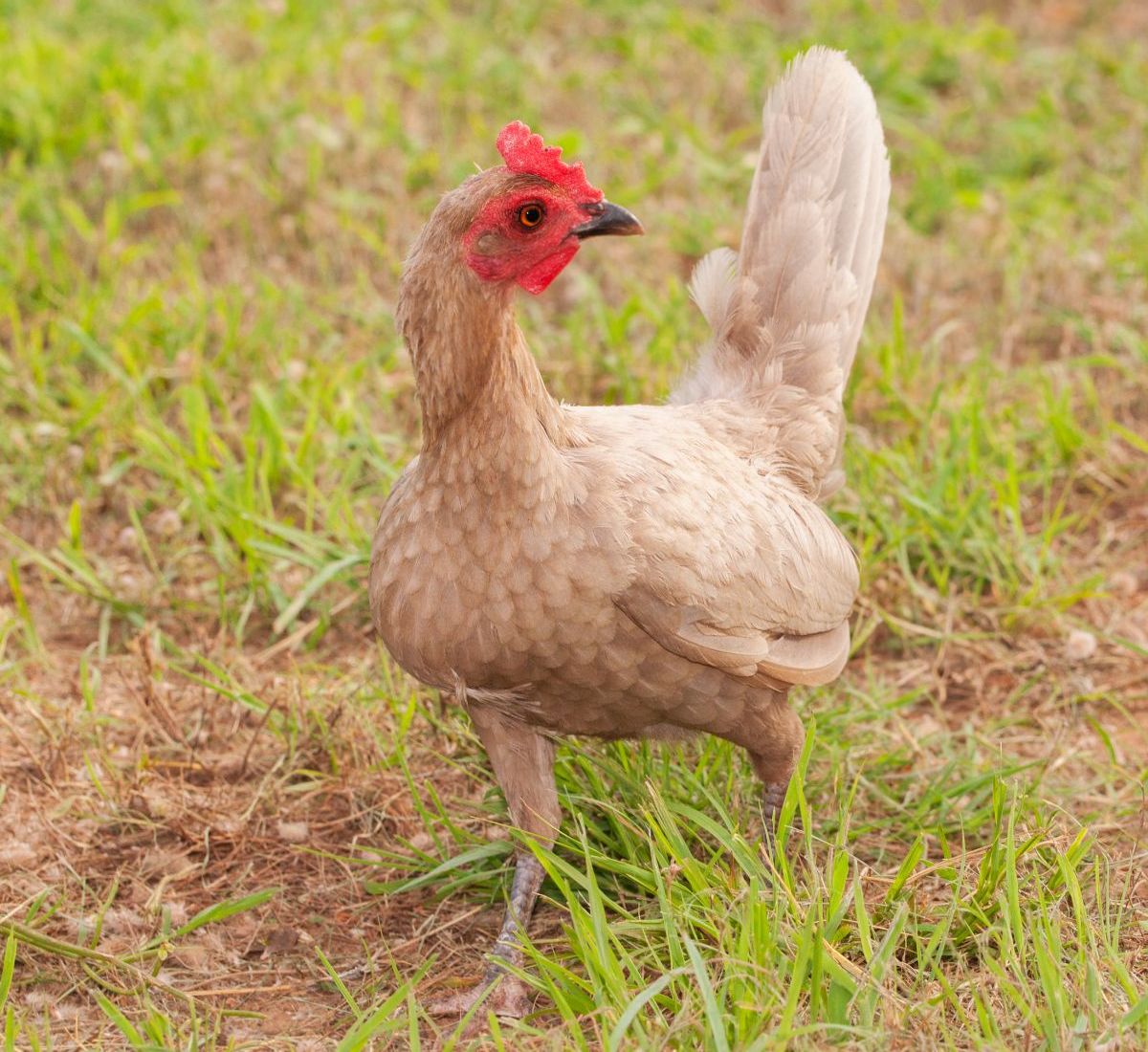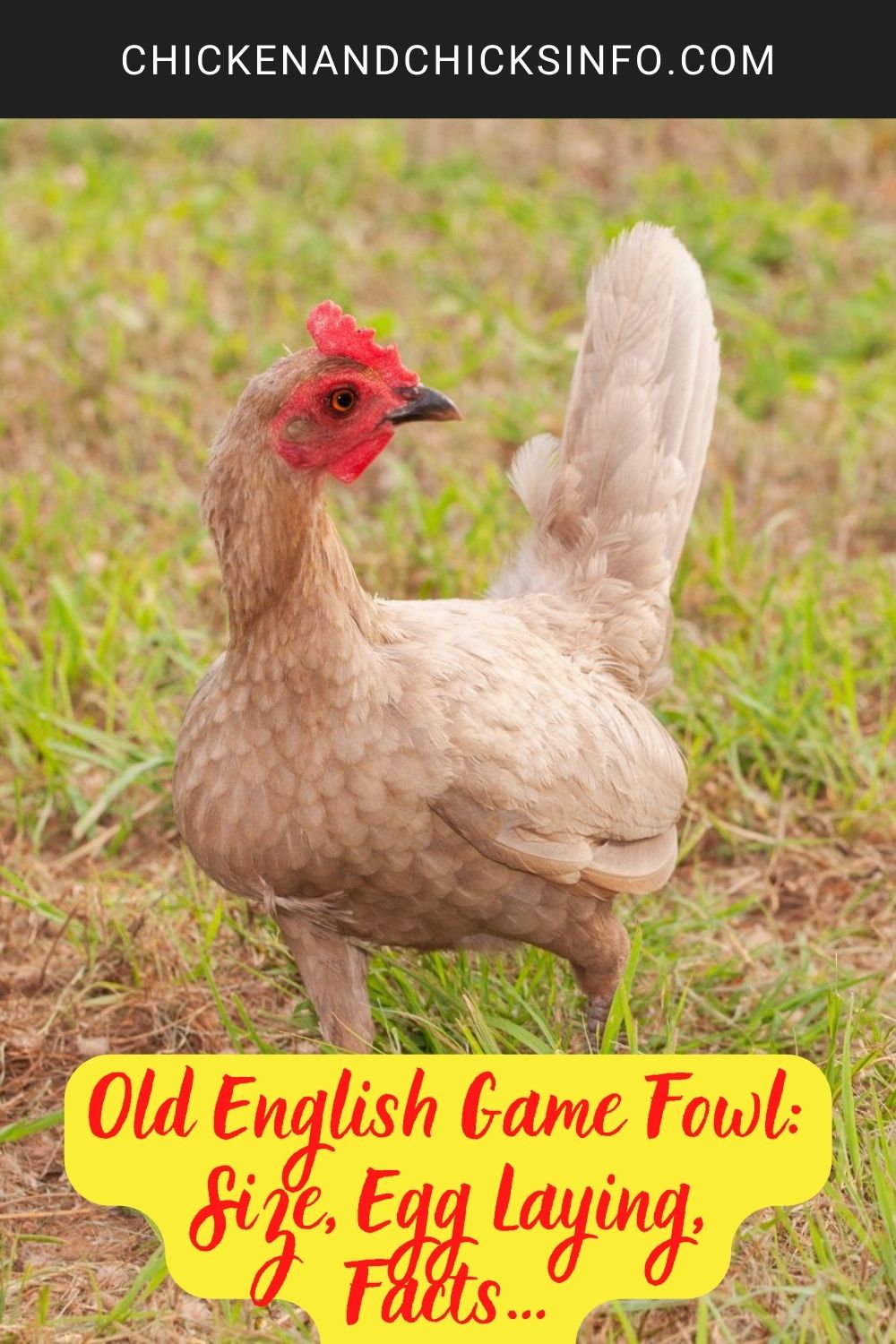
The Old English Game chicken is an interesting and lively breed of backyard chicken.
Its history can be traced back to Roman times when they were brought over to Great Britain during the 1st century.
So, they really are an “Old English” Game fowl as the name suggests.
It’s thought they were originally kept for fighting, as was popular at the time. They’re not large birds, and they don’t lay a lot of eggs, so keepers usually have other reasons to add this breed to their flock.
Today, they are mostly raised for ornamental or exhibition purposes. There are various color varieties, two standards are recognized by the Poultry Club of Great Britain, and there is a bantam version.
If you’re interested in learning more about the Old English Game bird, please read on:
Jump to:
- Old English Game Chickens Temperament and Personality
- Physical Characteristics
- Old English Game Pullets and Point-of-Lays
- Old English Game Egg Color, Size, and Production
- Are They a Good Backyard Chicken Breed?
- Old English Game Roosters
- Where to Buy English Old Game Online?
- Interesting Facts About the Old English Game
- In Summary
Old English Game Chickens Temperament and Personality
I’m not going to play it down, the Old English Game isn’t a good choice for first-time beginners.
They are popular with experienced backyard chicken keepers and poultry fanciers due to how lively they are. But that liveliness can be a handful, and they don’t always get on well with other chickens.
Also, despite being a small bird, Old Game loves having a large space to roam around. They are excellent foragers and are more aggressive in confined spaces.
They are also fairly noisy and territorial. So, as you can probably tell, they are much more suited to living on farms and properties with a good deal of space than a small backyard setting.
If you’re looking for a backyard breed that you can interact with and pet - you’re better off with a Sussex, Rhode Island Red, or one of the other popular breeds.
Physical Characteristics
The Old English Game is a small, muscular, and powerful chicken. Some joke they suffer from “small chicken syndrome” because they are so aggressive too.
They have hard, glossy, tightly packed feathers. Their beaks are well curved and large for the size of their heads, and they have strong legs.
Their earlobes are small, and they have large single combs and large wattles. Like most breeds, they have four toes and sharp, strong nails.
The impressive thing is how many color variants are recognized. The American Poultry Association recognizes 28 colors, and in Great Britain, they recognize 30 colors for the Oxford type, and 13 colors for the Carlisle type.
Old English Game Pullets and Point-of-Lays

If you’re picking up pullets or point-of-lays for the purpose of getting fresh eggs, you can expect them to start laying at around the 5-6 month range.
A little slower than most of the popular backyard breeds as they’re not prolific layers. Expect to start with small white/tinted white-colored eggs until they reach their potential with medium-sized eggs.
Old English Game Egg Color, Size, and Production
As I mentioned earlier, they are rarely kept for their eggs as they lay a modest amount per year.
That said, you can typically expect around 100-150 eggs per year. That works out at around 3 or so a week on the high side.
Obviously, if you have a few hens and you’re only interested in feeding your family, that’s still sufficient.
Old English Game lay medium-sized tinted white color eggs. The bantam variety lay tiny eggs (as all bantams do), barely larger than a quarter in size.
Are They a Good Backyard Chicken Breed?
Well, for beginners, no, they are not a good choice. For experienced backyard chicken owners, you will get a good deal of satisfaction out of owning these feisty little chickens.
There are two issues in regard to raising Old Game in a backyard setting:
They need a lot of space - If you live in an urban setting or have a small yard, don’t get Old English Game.
It’s tempting at first because they are so small. Especially the bantams, they’re tiny, cute, and look like they’d be perfect in a small coop.
This couldn’t be further from the truth. They require a good deal of space to roam, if not, see the next point below:
They are aggressive - Having an aggressive rooster to deal with can be daunting and scary for beginners.
If you hatch chicks, you’ll have to separate the roosters once they hit maturity at around 6 months old. Even keeping one rooster can be difficult as the hens are willing to fight, too.
The less space they have, the more territorial and aggressive they’ll be too. They’re also noisy, flighty, and quick - a recipe for disaster if you’re not properly equipped to deal with them.
Old English Game Roosters

Old English Game roosters can be very aggressive. Which, seeing as they were bred for competition fighting for so long, it’s not a huge surprise.
They have a few hens and one rooster at the city farm I help out at here. I was aware of the roosters’ reputation, so I asked the owner if they’d ever had more than one rooster.
He raised an eyebrow and told me, “never again”.
It’s fair to say that if you have more than one rooster they’ll fight. If they fight when you’re not around to stop it, then they’ll likely fight to the death.
Even one rooster can be a problem. So, unless you want a rooster to hatch chicks or have experience with them, I’d avoid keeping them.
Which is a shame, because I think they look really striking. Especially the variety with the white neck feathers, gold markings, and that large black tail.
Where to Buy English Old Game Online?
I get all of my online poultry from Cackle Hatchery. Obviously, availability is always subject to change, but at the time of writing this, they did have some Old English Bantams and a Standard OE available.
Well worth checking them out if you’re after any specific breed. I’m always amazed by how they’re able to keep such a wide range of breeds available.
Interesting Facts About the Old English Game
For all the pros and cons I’ve covered so far, one thing that can’t be ignored is that they are an interesting and unique breed for the most part.
The OEG has a long and interesting history, here are some fun facts about this breed:
- They are small and light birds, mature roosters weigh around 4.5 lbs and hens are 4 lbs.
- The bantams are very small, typically weighing just 1.5 lbs for roosters and just over 1 lb for hens.
- Of the two standards, Carlisle and Oxford, the Oxford is more slender while the Carlisle has a broader back.
- They are closely related to the original Jungle Fowl chicken.
- The hens are prone to going broody and are good mothers, even becoming more aggressive in defense of their chicks.
- OEG are popular exhibition birds, and some sell for as much as $1,000 in the exhibition circuit.
- The breed is recognized by poultry associations around the world.
- They have a longer than average life expectancy for a chicken, estimated at around 15 years.
In Summary
While they might not be one of the best choices as a backyard chicken to raise for fun or eggs, there’s no denying that the Old English Game is an interesting and fun breed.
If you like a challenge - or if like me you like to be different - I’d still look into getting some OEG hens if you have the space to accommodate them.
Just avoid the roosters, you’re not going to tame thousands of years being bred to fight out of them!





